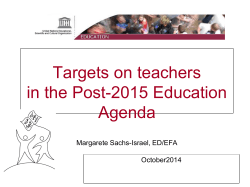
to a PDF File of this Press Release
Space and Science Research Corporation P.O. Box 607841 * Orlando, FL 32860 (407) 667-4757 * www.spaceandscience.net Historic Global Temperature Drop Predicted Thursday, November 20, 2014 3:00 PM Press Release 4-2014 The Space and Science Research Corporation (SSRC) announces today an important set of climate change predictions dealing with the coming cold climate epoch that will dominate global temperatures for the next thirty years. According to analysis of the most reliable solar activity trends and climate models based on the Relational Cycle Theory (RC Theory), the SSRC concludes the following: 1. The Earth is about to begin a steep drop in global temperatures off its present global temperature plateau. This plateau has been caused by the absence of growth in global temperatures for 18 years, the start of global cooling in the atmosphere and the oceans, and the end of a short period of moderate solar heating from an unusually active secondary peak in solar cycle #24. 2. Average global atmospheric and oceanic temperatures will drop significantly beginning between 2015 and 2016 and will continue with only temporary reversals until they stabilize during a long cold temperature base lasting most of the 2030’s and 2040’s. The bottom of the next global cold climate caused by a “solar hibernation” (a pronounced reduction in warming energy coming from the Sun) is expected to be reached by the year 2031. 3. The predicted temperature decline will continue for the next fifteen years and will likely be the steepest ever recorded in human history, discounting past short-duration volcanic events. 4. Global average temperatures during the 2030’s will reach a level of at least 1.5° C lower than the peak temperature year of the past 100 years established in 1998. The temperatures during the 2030’s will correspond roughly to that observed from 1793 to 1830, shortly after the founding of the United States of America. This average lower global temperature of 1.5° C on average, translates to declines in temperatures that will be devastating for crop growing regions in the mid latitudes of the planet. The 2030’s and 2040’s may be even colder, much colder than indicated in the predictions above. The SSRC has already predicted two scenarios for this period as documented in its Global Climate Status Report (GCSR). The first expected scenario is one similar to 1793 to 1830. The second is one corresponding to the “Little Ice Age,” approximately from 1615 to 1745. This latter level of the coming cold climate has been predicted by climatologists at the Russian Academy of Sciences and others. Determination of which scenario will dominate can come as early as 2020 to 2023. These periods of intense cold are also strongly associated with the largest earthquakes and especially the largest volcanic eruptions. Major volcanic eruptions can create a veil of dust and gas around the globe, blocking sunlight, thus adding to the intensity of the already existing cold period. This occurred during the last solar hibernation with the eruption of Mt. Tambora in 1815, in Indonesia – the largest eruption ever recorded. It was 100 times larger than the Mt. St. Helens eruption of May 18, 1980. As previously predicted by the SSRC, substantial crop damage, social disruption, civil strife, and loss of life are expected to result from the significant reduction in the Earth’s temperatures which will enter its final phase of rapid decline beginning between 2015 and 2016. The SSRC believes energy and food shortages are likely to result from the long lasting and extreme cold period in part, because agricultural conglomerates and utility companies are not factoring this potentially dangerous new cold epoch into their future food production and power requirements. The above new predictions by the SSRC and its President Mr. John Casey are echoed by other experts. Dr. Dong Choi, Director of Research for the International Earthquake and Volcano Prediction Center (IEVPC), and Editor of the New Concepts in Global Tectonics (NCGT) Journal, says: “I support John Casey’s predictions on the arrival of a major cold period caused by a solar hibernation. We are also witnessing a major increase in earthquake activity represented by deep strong quakes throughout the world since 1990, which perfectly matches the declining period of solar activity.” From his field research location on the island of Svalbard, between Norway and the North Pole, is this comment by Dr. Ole Humlum, Glaciologist, Geomorphologist, and Professor of Physical Geography at the University of Oslo: “These latest series of predictions from the SSRC highlights the growing importance for politicians to formulate a plan B rapidly, given the likely possibility that their plan A (based on future warming as forecasted by CO2-driven climate models) will fail thoroughly in the years to come. The prospect of a significant decline of agricultural production due to lower temperatures is very disturbing.”
© Copyright 2025















